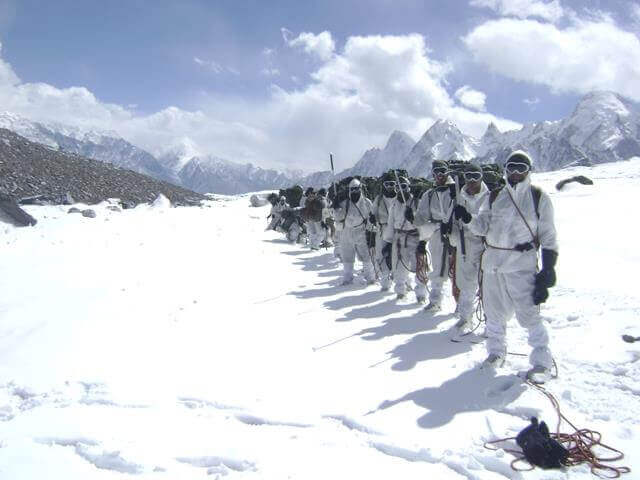
Operations in Kailash Range – An Year On: India’s Strategic Resolve Demonstrated
Sun, 29 Aug 2021 | Reading Time: 5 minutes

Operations in Kailash Range – An Year On: India’s Strategic Resolve Demonstrated
Lieutenant General Vinod Bhatia (Retd)
Achieving strategic, operational and tactical surprise, India occupied the operationally important heights of the Kailash Range on the night of 29/30 August 2020, on the South Bank of Pangong Tso. Though a tactical action, this demonstrated a strategic resolve by India and the Indian Armed forces, signaling to China that changing the status quo along the Line of Actual Control (LAC) is a two-way street. A year on, it is time to review the payoffs and the outcomes of the ‘Quid Pro Quo’ (QPQ) action by India.
The forward deployment by PLA, changing the ‘Status Quo’ in May / June last year, leading to violent incidents at Galwan shattered the four decades plus ‘Peace and Tranquility’ along the LAC, with China violating the five agreements in total disregard to established norms and practices. Though taken by surprise, the Indian Army was quick to react, ensuring an equitable and proportional deployment along the LAC, thus preventing further intrusions.
However, the PLA had already occupied certain areas on the Indian side of the LAC mainly on North Bank Pangong Tso, Galwan, Gogra/ Hot Spring and Depsang. Unfortunately, there is no common understanding of the LAC, which continues to be a line of perception that both Delhi and Beijing have been unable to resolve despite twenty two rounds of talks between the Special Representatives.
India’s strategy of ‘NO BLINKING NO BRINKMANSHIP’ has contributed to successfully resolving issues along the LAC. However, the 2020 incursions by the PLA were different. In an unprecedented move, PLA soldiers attacked Indian soldiers in Galwan on 15/16 June employing spiked clubs. The retaliation by Colonel Santosh Babu and his men inflicting casualties on the PLA ensured that there were no more ‘Galwans’. Had Colonel Babu and his men not retaliated effectively and with the ferocity that they displayed; we would have witnessed many more Galwans. It is logical to assume that spiked clubs and other such primitive weapons would have been issued to other PLA units along the LAC for similar use.
In a positive development even after Galwan, the Corps Commander level talks continued, with the fourth round of talks held at Chushul on the Indian side on 14 July 2020. India, however, was not negotiating from a position of any strength as the PLA held all the cards. India’s position, though clear and categorical, was one of establishing ‘Status Quo Ante’ as of April 2020, that is prior to the forward deployment by the PLA.
The situation along the North bank of Pangong Tso was sensitive and tense post-Galwan with the world’s two largest armies facing each other in close contact. The chances of a spiral leading to a conflict which both China and India do not want were very high. The talks at the military and diplomatic level were not yielding any results.
In a swift action, India occupied certain operationally important heights along the Kailash range thus dominating the PLA garrison at Moldo, and the approaches of Spanggur Gap. This signaled and demonstrated a strategic resolve to China, that India will not only face up to China but also has the politico – military will to change the ‘Status Quo’ along the 3488 km long India – China border.
It needs reiteration that the Indian Army is well deployed in defensive positions all along the LAC, as also is by far one of the most battle hardened and combat rich forces in the world specially so in high altitude warfare. The operation to occupy the heights was well planned and swiftly executed, surprising the Chinese. The reported employment of the ‘Special Frontier Force’ (SFF) a force composed of Tibetans specially trained in Guerilla warfare and possible resultant consequences, was not lost on China. Tibet and Tibetans are a core concern for China.
The QPQ action was a game changer giving India the leverage to negotiate from a position of relative strength. The impact was evident in the sixth round of talks held on 21 September 2020. China asked India to vacate the heights occupied on the Kailash range. A reluctant China agreed to ‘continuing the dialogue and arrive at a fair, reasonable and mutually acceptable disengagement as early as possible.’
It is the demonstrated strategic resolve by India which finally resulted in the disengagement from the North bank of Pangong Tso in February 2021, which was the most sensitive friction point. This was seen as a prelude to disengagement from other friction points at an early date. As further disengagement did not take place till earlier this month, there was considerable criticism of India vacating the Kailash Range just to facilitate disengagement from North bank Pangong Tso. Many felt that India had lost the advantage and conceded much more and gained little.
It needs to be understood that every QPQ option including the deployment on the Kailash range has a finite value in time and space. India achieved its objectives by demonstrating a strategic resolve and resilience in first occupying the Kailash range and then vacating it to ensure disengagement at Pangong Tso. It needs to be noted by the critics that it is the first time ever after 1979 Vietnam that China has retreated after occupying territories of adversaries either on land or at Sea.
The 3488 km long India – China border have many ‘Kailash Ranges’ which India can occupy as a QPQ action as and when required. India’s aim and intent is to ensure ‘Status Quo Ante’ along the LAC. The challenge definitely will be the Depsang Plains and the bottleneck at Raki Nallah reportedly occupied by the PLA. With China it is a game of patience and as India has demonstrated a strategic resolve surprising China, the probability of achieving ‘Status Quo Ante’ is high in the near to mid-term.
Both Delhi and Beijing continue to negotiate disengagement from remaining friction points through talks at the political, diplomatic and more importantly military levels. Though there has been no escalation whatsoever even after Galwan, however Indian armed forces will need to be more vigilant, especially so in the Kameng Sector i.e., Tawang and Doka La/ Doklam (Sikkim/ Western Bhutan) on account of the strategic importance of these areas. A mighty China is pitted against a tiny but proud nation Bhutan in the Doklam Plateau. The area is a strategic concern for India. Chinese occupation and infrastructure in Doklam directly threaten the narrow ‘Siliguri Corridor’ which connects eight and half states of the union of India to the mainland.
While the two nuclear armed nations seek to resolve the 15-month-old standoff along the LAC through dialogue, India will need to review and revise its strategy to deter China’s aggressive behaviour. India could evolve and practice a 3 D strategy to ‘Defend, Dominate and Deter’. In brief ‘Defend’ along the LAC, ‘Dominate’ the Indian Ocean region especially the Sea Lines of Communication which are China’s concerns, and ‘Deter’ China’s aggressive behaviour by synergising all domains, ‘ Bind to Balance’ with nations where there is a convergence and congruence of interests eg QUAD and QUAD Plus Plus.
The situation in Afghanistan should not divert India’s attention and focus from the primary threat which continues to be China. China practices Sun Tzu’s dictum “Among chaos there is always an opportunity”. The 2020 forward deployment by China was also carried out when the COVID situation was at its worst and India’s focus was to supply medicine and relief to nations the world over.
**************
Author

Lieutenant General Vinod Bhatia, PVSM, AVSM, SM (Retd) is a former Director General of Military Operations (DGMO) & Director CENJOWS-The Centre for Joint Warfare Studies, the official think tank of the tri services.
******************
Disclaimer
The opinions expressed in this article are the author’s own and do not reflect the views of Chanakya Forum. All information provided in this article including timeliness, completeness, accuracy, suitability or validity of information referenced therein, is the sole responsibility of the author. www.chanakyaforum.com does not assume any responsibility for the same.
Chanakya Forum is now on . Click here to join our channel (@ChanakyaForum) and stay updated with the latest headlines and articles.
Important
We work round the clock to bring you the finest articles and updates from around the world. There is a team that works tirelessly to ensure that you have a seamless reading experience. But all this costs money. Please support us so that we keep doing what we do best. Happy Reading
Support Us




















POST COMMENTS (2)
When Did China Take Over Mount Kailash? – Pietroortolani
Vijay Chowgule